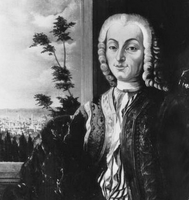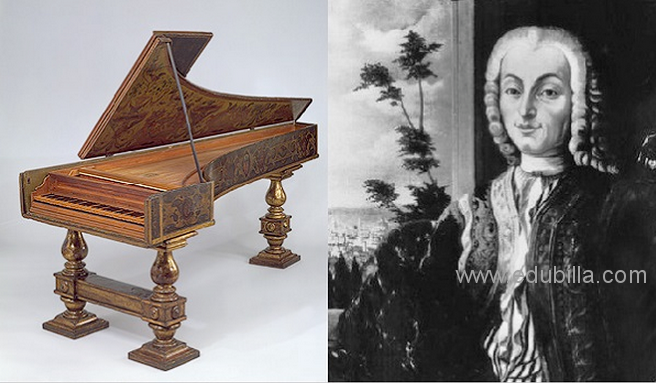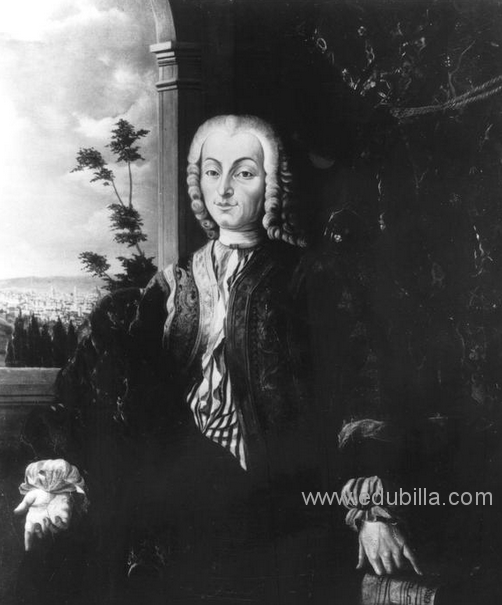










Bartolomeo Cristofori (1655-1731), a harpsichord maker for a Florentine duke, built the world's first piano. He later made several technical alterations to improve the instrument's acoustics that have remained essential components of its construction.
Almost nothing is known about the personal life of Bartolomeo di Francesco Cristofori, except that he was born in the northern Italian city of Padua on May 4, 1655. He became a harpsichord maker, and by 1688 his reputation brought him to the attention of Prince Ferdinando de Medici, son of the grand duke of Tuscany. The prince owned forty harpsichords and spinets, and hired Cristofori to both curate the collection and build new ones. The harpsichord, also called a clavecembalo or clavecin, dated back to the fourteenth century and took the form of strings stretched over a wooden sounding board. Notes emerged when a plectrum, or pick made from a bird's quill or leather, struck the string. Its main drawback was an inability to emit gradations in tone; striking the keys hard, or barely at all, produced the exact same vibration. Larger harpsichords, instruments that contained three or even four sets of strings, were eventually developed that gave an added depth to the sound. However, even the smallest harpsichord was expensive to build and maintain. They were the sole province of kings and minor nobles who possessed a fondness for the arts, like the Medicis.
The harpsichord was the predecessor of Cristofori's piano, but it also had links to a less rarified instrument. The dulcimer, an ancient stringed instrument probably brought to Europe from Asia by Romany gypsies, was a far more populist musical instrument. It was a simple stringed board, and could be played by those with a rudimentary musical ability. Literature of the era rarely even mentions it, so lowly was it considered to be inside established musical circles. A violinist named Pantaleon Hebenstreit improved on the dulcimer around 1700, creating a double one with a five-octave range. The player could inject much more emotion into the playing, and was able to produce a range of tones. Hebenstreit demonstrated his invention, which he called a Pantaleon, before King Louis XIV of France in 1705. Back in Germany, Hebenstreit gained a measure of renown, and others thought about improving on his innovation by making the two hand-held hammers into a series of keys instead, each of which would be connected to its own hammer. An instrument-maker in France named Marius and one Christoph Gottlieb Schroeter of Germany devised designs for such instruments, but they were never built.
Cristofori's patron, Prince Ferdinando, died at the age of 50 in 1713. There is evidence that Cristofori continued to work for the Medici court, still headed by the Prince's father Cosimo III. Specifically, a 1716 inventory of the musical instrument collection is signed "Bartolommeo Cristofori Custode", indicating that Cristofori had been given the title of custodian of the collection.
During the early 18th century, the prosperity of the Medici princes declined, and like many of the other Medici-employed craftsmen, Cristofori took to selling his work to others. The king of Portugal bought one of his instruments.
In 1726, the only known portrait of Cristofori was painted. It portrays the inventor standing proudly next to what is almost certainly a piano. In his left hand is a piece of paper, believed to contain a diagram of Cristofori's piano action. The portrait was destroyed in the Second World War, and only photographs of it remain.
Cristofori continued to make pianos until near the end of his life, continually making improvements in his invention. In his senior years, he was assisted by Giovanni Ferrini, who went on to have his own distinguished career, continuing his master's tradition. There is tentative evidence that there was another assistant, P. Domenico Dal Mela, who went on in 1739 to build the first upright piano.
In his declining years Cristofori prepared two wills. The first, dated January 24, 1729, bequeathed all his tools to Giovanni Ferrini. The second will, dated March 23 of the same year, changes the provisions substantially, bequeathing almost all his possessions to the "Dal Mela sisters ... in repayment for their continued assistance lent to him during his illnesses and indispositions, and also in the name of charity." This will left the small sum of five scudi to Ferrini. Pollens notes further evidence from the will that this reflected no falling out between Cristofori and Ferrini, but only Cristofori's moral obligation to his caretakers. The inventor died on January 27, 1731.

